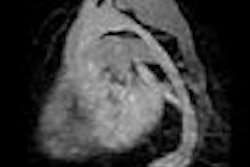Life is full of trade-offs. We find ourselves in situations where the things that we want become mutually exclusive. This phenomenon occurs in the professional world as much as it does in our personal lives.
Today, financial pressures are compelling diagnostic imaging facilities to maximize referrals and squeeze more patients in and out of the scanner in a limited time period. Simultaneously, MRI safety is a major concern with organizations like the American College of Radiology (ACR) releasing new guidance on MRI safety. These recommendations insist on changes that may not be anticipated. In order to comply, which do you choose: throughput or safety? And is a third option -- both -- a realistic one?
If we look deeper than the "bottom-line" numbers of revenue, patient visits, or accreditation "check boxes, "we can begin to see the physical workings of our imaging facilities. This nuts-and-bolts perspective is crucial when results demand that your total process management be retooled. By looking at the full gamut of a patient’s experience at your facility, you may be able to escape the either/or proposition of safety versus throughput.
The truth is that far too much has been made of the argument that safety features slow patient throughput or impede operations. Yes, when a single safety feature is retroactively applied to a suite as a Band-aid panacea, it will cause friction and will undermine the effectiveness of the feature. This happens when safety, or any attribute, is viewed as a product and not an integral part of the operational process of a suite.
In the end, the financial and safety goals of a MRI suite aren't in conflict as they're often made out to be. A smoothly running suite can streamline patient screening and exam preparation, providing a safer and more expedient patient visit. It all depends on what your goals are and how well you work to meet them. While the process for setting and meeting these goals holds true for "re-engineering" existing processes, it may be more clearly illustrated when viewed through the example of designing a new facility.
For all capital projects there are two sets of goals: those that are communicated ("Grand opening in 6 months," "Within budget," or "Attractive") and more complex or personal ones that are frequently kept private ("A place I want to be proud to be associated with," "Where we can take the best care of our patients," or "The only place I'd want my family members to be referred").
We all recognize that these projects can be measured against whether the communicated goals are met. But the physical design of the building can also have a profound impact on whether unspoken goals are met.
There are copy-and-paste solutions to a myriad of the simpler goals, but the more qualitative results require a greater level of exploration with regard to hat you want to achieve. Of course, this additional exploration is nearly impossible when all the objectives -- including the personal ones -- aren't effectively communicated. When communicated to experienced planners, even the most illusive goals may be better realized in the use of a well-planned facility.
What it boils down to is this: you can have your cake and eat it too. You can have throughput, plus safety, plus an attractive facility, plus whatever else you want, as long as you do the following:
- Identify the issues that you want to have addressed in the layout of your facility
- Invest in the resolution of those issues
It's about defining your own "best practice" operation and identifying the physical components that make that happen. For facilities that haven't contemplated how they’d ideally like to operate, questions of how many screening rooms should be built, or where the locked doors ought to be, seem disassociated from overall performance and become points of personal opinion instead of components of a global solution.
Too often new facilities are designed and evaluated solely based on lowest common denominators such as cost, square footage, and schedule. For equipment as complex as MRI or CT and a process as dynamic as the delivery of healthcare, do these quantifiable figures really tell us anything about how well suited a space is to the care that is to be provided?
For existing facilities willing to take a fresh look at their operations in light of changing regulatory and financial conditions, the challenges require comparable levels of attention to the often-unspoken objectives.
In both cases (new and existing facilities), it requires a degree of expertise to go beyond that which is easily quantified and address the issues of quality in operations and facilities. However, once priorities have been set and the "best practices" shaped for your unique needs, introducing a new issue, such as safety or regulatory compliance, becomes a minor tweak as opposed to trying to force a square peg in a round hole.
In the next installment of this column, we'll explore a checklist of process, practice and procedures items that, in today's competitive environment, should be bedrock elements of any imaging provider’s operations. Join us for an upcoming article in which we will look at the qualitative elements of your imaging services and how you can make them better for your staff, patients and your bottom line!
By Tobias GilkAuntMinnie.com contributing writer
August 8, 2007
Reprinted from www.mri-planning.com by permission of the authors. If you would like more information on any aspect of MR facility design or safety, please contact Robert Junk or Tobias Gilk at MRI-Planning.com.
Related Reading
What does your MRI vendor know about your quench vent that you don't? July 3, 2007
Stand around and wait -- stat! What's your imaging suite emergency procedure? June 11, 2007
MR guidelines: Elevating standards of practice and care, May 10, 2007
MRI and patient safety: Still waiting to go global, April 24, 2007
MR suite level designations: Don't let complex procedures overwhelm your facility, March 27, 2007
Copyright © 2007 MRI-Planning



















